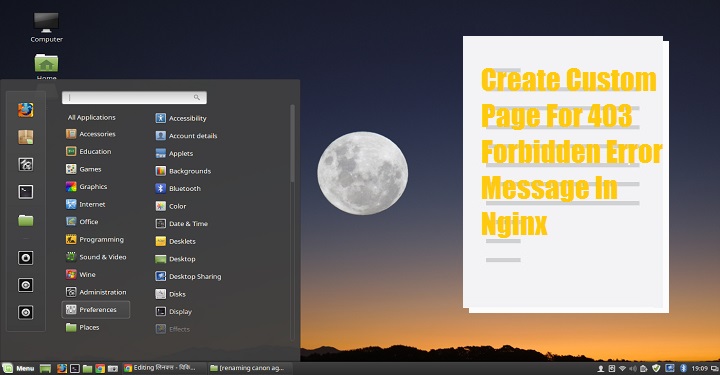
- #Screensteps custom error page how to#
- #Screensteps custom error page install#
- #Screensteps custom error page drivers#
- #Screensteps custom error page download#
- #Screensteps custom error page windows#
Choose “File is on this computer” and press “Flash Zip”. Step 11: You will find a big list here, but we will be concentrating on “ Flash Zips“. Step 10: Jump to your toolkit and click “ Launch” button in the Advanced Utilities.

#Screensteps custom error page download#
You should also download latest version of Google Apps. Just point your web browser to this page and download CyanogenMod. For the demonstration we will be using CyanogenMod ROM. Step 9: It’s time to download the custom ROM for your device. Do remember to enable the “ Custom Recovery” option before clicking ‘Root”. Now start rooting by clicking the “ Root” button. Step 8: If everything went on well, step 7 will unlock the bootloader. So you are advised to take backup before starting step 1. Note: Step 7 will remove everything on your device. (The wizard will guide you during the installation.) Step 7 : On the next screen, click “ Unlock” button to unlock the bootloader.
#Screensteps custom error page drivers#
Step 6: Once the drivers are installed, the toolkit will provide you an option to test driver’s functionality.
#Screensteps custom error page install#
Step 5: In the next window, click “ Full Driver Installation Guide – Automatic + Manual” button this will install all the necessary drivers for your device. Choose your device model and operating system version from the list-menu and click “ Apply“. Step 4: Once the toolkit is installed successfully, you will have to run it. Step 3: Download the Nexus 7 Root Toolkit and install it following the on-screen steps. Step 2: Connect Nexus 7 to your computer via USB cable and keep plugged-in until the Nexus Root toolkit asks you to remove it. No worries, you can just tap Settings > About Tablet > Build Number and tap it for seven times to unlock it. In case if you don’t find the USB Debugging option, probably Google has locked it. You will have to enable “ USB Debugging” by tapping Settings > Developer Options > USB Debugging. Taking a backup of device data is advised. is not responsible for any damage caused to your device while performing the below steps. Ok! Lets start the process Disclaimer: Tryout below steps at your own risk. Before starting, you might ask me why would someone add custom ROM to Nexus 7? The reason is simple, adding the custom ROM will improve the performance of your device, increase its speed, also allows you to get more out of your tablet.
#Screensteps custom error page windows#
Here we are going to discuss the process of installing custom ROM on Nexus 7 using your windows PC. For more details, see this page in the Information Center, Overview of the custom error page policy.Bought a new Nexus 7 and willing to install custom ROM? Then you have landed on the right page. If the error originates from the WebSphere Application Server Web container, as a result of a WebSphere Application Server problem or perhaps the Web application is not active, then it might be necessary to use the WebSphere Application Server proxy server in conjunction with a special error page application. WebSphere Application Server proxy server For more details, see the Information Center topic Web.xml.įor example, the following tells the Web application to send error404.html page if there is a 404 error in the application. If the request is handled by a Web application running in WebSphere Application Server, and an error occurs, use the error-page option in web.xml (or web_merged.xml if it exists) to specify a customized error page. Web application running in WebSphere Application Server If the request is handled by IBM HTTP Server, and an error occurs, use the ErrorDocument directive in the IBM HTTP Server config ( nf) to specify a customized error page for that specific error, as described here, ErrorDocument Directive.įor example, the following tells IBM HTTP Server to send the custom404.html page if there is a 404 error in IBM HTTP Server: The Web server plug-in determines if the request should be handled by WebSphere Application Server, or should be handled by IBM HTTP Server.
#Screensteps custom error page how to#
The purpose of this technote is to act as a single point of reference with links to other documentation regarding how to create customized error pages in various IBM software products.

However, it is possible to create customized error pages and configure the IBM software to send the customized error pages instead.

By default, the error page returned to the browser is generic in appearance. When a request comes in from a Web browser, there might be an error at any of those layers of software. In a typical IBM WebSphere Application Server environment, there are many pieces of IBM software involved, such as IBM HTTP Server, Web server plug-in, and WebSphere Application Server.


 0 kommentar(er)
0 kommentar(er)
